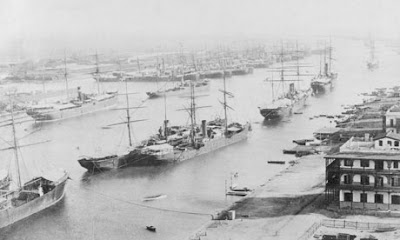The Republic of South Sudan
When the European governments sliced up Africa at the end of the 1800s, the vast, arid zone of the Sahara and the Sahel was intended to be French. But a plan by France to build a huge dam for irrigation on the Nile, which would have diverted the water, alarmed the British.
The British panicked that any diversion would result in the Nile no longer reaching Cairo. Egypt was the door to India, and the route to India had to be British controlled.
To ensure this door remained open, the thinking went that Egypt must remain under British influence to control the eastern Mediterranean and the newly acquired Suez Canal. As Egypt depended on the Nile, so the Nile right up to its source in Uganda must also be British.
After a stand off in southern Sudan, the French withdrew and Britain took over the Nile basin and created Sudan.
Britain also pursued its mission to abolish slavery in Africa. That meant stopping its Egyptian allies and the northern, Arabica Sudanese Muslims enslaving the black African southerners.
So the British ruled Sudan as 2 separate territories until 1946. In the north they simply retrained the class of civil servants who had served the Ottoman Empire and the Islamist ruler known as the Mahdi. In the south they ruled through the chiefs and kings of more than two hundred ethnic groups. Northerners were not allowed to spread Islam in the south but Christian missionaries were encouraged. Only in the north did the British instigate any development. The south was ruled but left to rot.
In the lead up to independence in 1956 southern army officers, still referred to as Abbasid, slaves by some northerners, rebelled. This turned into a full scale battle for independence 6 years later and it lasted until a peace treaty in 1972.
But the south and southerners were still discriminated against, and a new rebellion started in 1983. Officially this wasn’t for independence but for a united, secular, democratic Sudan. The rebel Sudan People's Liberation Movement had many northern followers in the early days. But, apart from John Garang, its leader, all the SPLM members I have spoken with admitted in private that the ultimate solution was separation and independence of the south.
In Khartoum, the capital, you would have barely known there was a war on. The chattering classes rarely spoke about it, the newspapers rarely reported it. But on the outskirts of the city, vast shanty towns made of cardboard and plastic sheeting grew like fungus.
More than a million southerners camped out on the fringes of the city, having fled the war zones and living on handouts from aid agencies. The only thing the government did for them was occasionally to send in the police to bulldoze their settlements, driving the people further out into the desert.
In the south, the war was like a boxing match on a football pitch. In the rainy season the SPLA fighters would attack small towns, lay mines on the roads and ambush vehicles. In the dry season, the government troops would advance out of the towns and drive the SPLA back into the bush or across the border into Ethiopia which supported the SPLA.
No development took place. There were few schools, almost no hospitals or medical centers and no roads or economic development. Outside the war zones people lived much as they had for thousands of years, many probably unaware they were in a country called Sudan.
In the war zones thousands of young men were seized by the SPLA and force marched across the border into Ethiopia to be trained as fighters. Others were forcibly recruited in the Sudan government army. Today the human condition in South Sudan is appalling. Infant mortality rates are estimated to be around 150 per thousand births, the worst in the world.
One effect of 9/11 was that the US started looking for solutions to conflicts throughout the world that involved Islamist fundamentalism.


Comments
Post a Comment